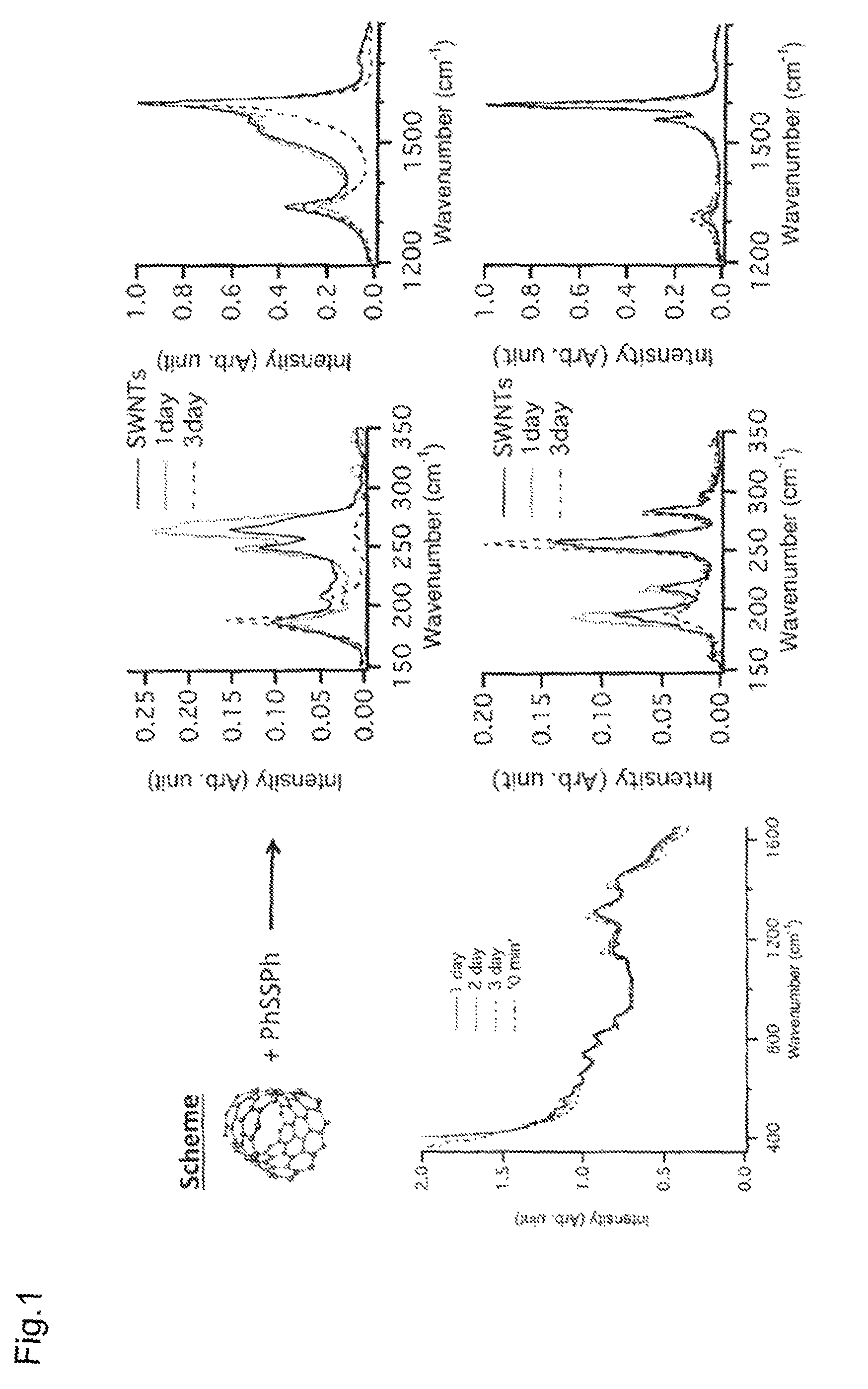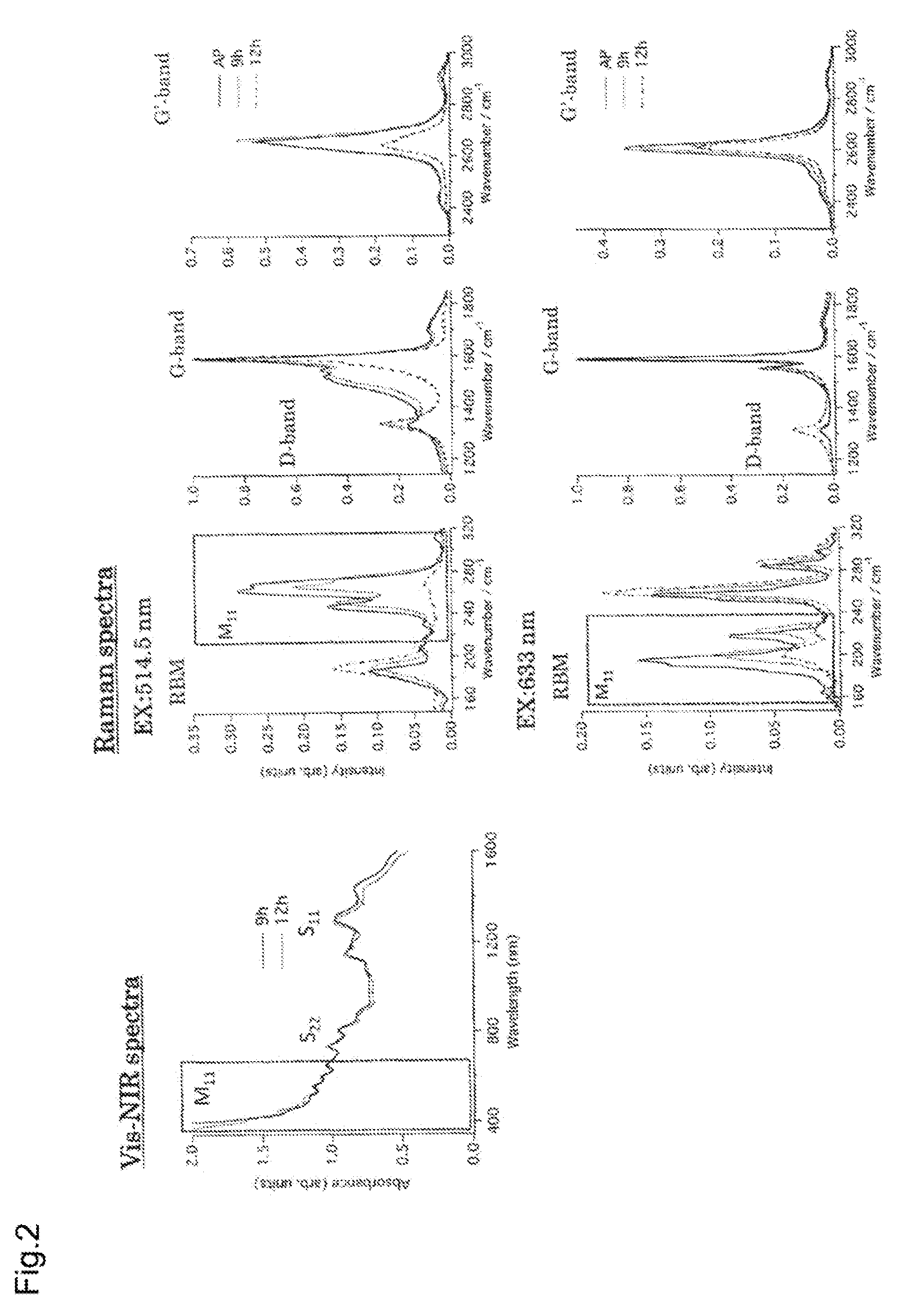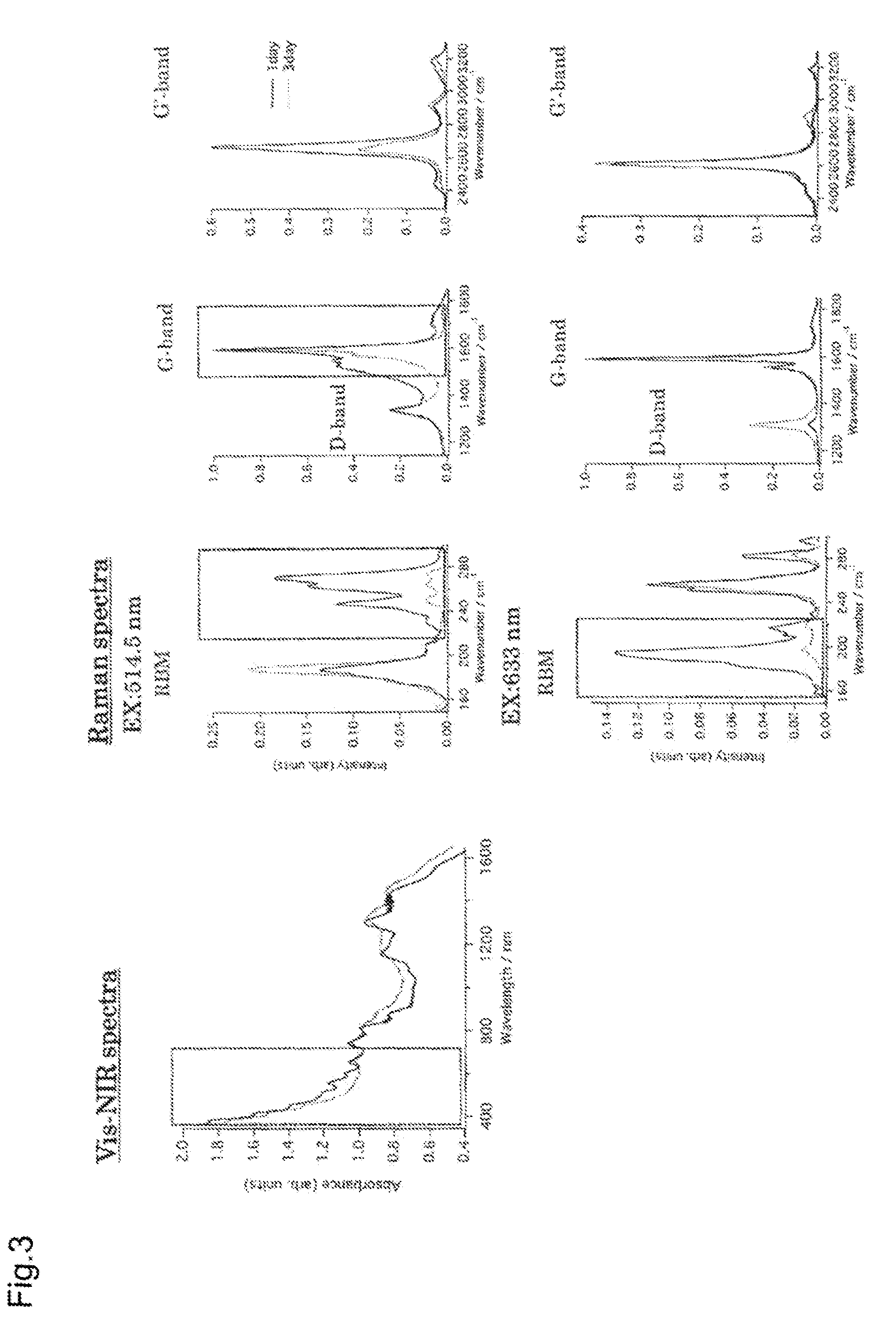Method for producing selectively functionalized carbon nanotubes
a technology of carbon nanotubes and functionalized carbon nanotubes, which is applied in the direction of organic chemistry, alkali metal carbonates, chemistry apparatus and processes, etc., can solve the problem that no method is proposed that enables m-swnts or s-swnts to be directly obtained in pure form
- Summary
- Abstract
- Description
- Claims
- Application Information
AI Technical Summary
Benefits of technology
Problems solved by technology
Method used
Image
Examples
example 1
[0059]Single-walled carbon nanotubes (SWNTs; HiPco method; 0.1 mg) were placed in a PYREX® reaction vessel, and 10 ml of tetrahydrofuran (THF) containing 0.05 M diphenyl disulfide was added. The mixture was irradiated with ultrasonic waves in the atmosphere for 2 hours. Here, light from the light source white fluorescent lamp was also used for irradiation.
[0060]Ultrasonic irradiation was performed at 24-hour intervals for the duration of 2 hours each time, and the solution was measured by taking absorption spectra after 1, 2, and 3 days. The result confirmed the disappearance of the characteristic absorption based on the metallic SWNTs (FIG. 1, left).
[0061]Raman spectrum measurement was performed after filtering the solution (after 1, 2, and 3 days) through a PTFE membrane filter. The result confirmed a decrease in the Raman spectrum attributed to the metallic SWNTs, and an increased sp3 bond-derived D-band peak intensity, showing that the chemical reaction proceeded selectively for...
example 2
[0062]Single-walled carbon nanotubes (SWNTs; HiPco method; 0.1 mg) were placed in a PYREX® reaction vessel, and 10 ml of tetrahydrofuran (THF) containing 0.05 M diphenyl disulfide was added. The mixture was irradiated with ultrasonic waves in the atmosphere for 9 hours or 12 hours. Here, light from the light source white fluorescent lamp was also used for irradiation.
[0063]Absorption spectrum measurement of the solution confirmed the disappearance of the characteristic absorption based on the metallic SWNTs (FIG. 2, left).
[0064]Raman spectrum measurement was performed after filtering the solution through a PTFE membrane filter. The result confirmed a decrease in the Raman spectrum attributed to the metallic SWNTs, and an increased sp3 bond-derived D-band peak intensity, showing that the chemical reaction proceeded selectively for the metallic SWNTs (FIG. 2, right).
[0065]The selective interaction based on the electrical properties proceeds as the ultrasonic irradiation time increases...
example 3
[0066]A thin film of single-walled carbon nanotubes (SWNTs; HiPco method) was fabricated on a quartz base by using a spray method, and dipped in 10 ml of tetrahydrofuran (THF) containing diphenyl disulfide. Here, light from the light source white fluorescent lamp was used for irradiation.
[0067]The base was taken out after 48 hours, washed with methanol, and measured by taking absorption spectra. The result confirmed the disappearance of the characteristic absorption based on the metallic SWNTs (FIG. 3, left).
[0068]Raman spectrum measurement confirmed a decrease in the Raman spectrum attributed to the metallic SWNTs, and an increased sp3 bond-derived D-band peak intensity, showing that the chemical reaction proceeded selectively for the metallic SWNTs (FIG. 3, right).
[0069]The SWNTs sprayed onto the thin film are highly isolated. A time-course study of changes with reaction time conducted in the same manner as for the reaction in the solution of Example 1 showed improved reactivity o...
PUM
| Property | Measurement | Unit |
|---|---|---|
| excitation wavelengths | aaaaa | aaaaa |
| excitation wavelengths | aaaaa | aaaaa |
| excitation wavelength | aaaaa | aaaaa |
Abstract
Description
Claims
Application Information
 Login to View More
Login to View More - R&D
- Intellectual Property
- Life Sciences
- Materials
- Tech Scout
- Unparalleled Data Quality
- Higher Quality Content
- 60% Fewer Hallucinations
Browse by: Latest US Patents, China's latest patents, Technical Efficacy Thesaurus, Application Domain, Technology Topic, Popular Technical Reports.
© 2025 PatSnap. All rights reserved.Legal|Privacy policy|Modern Slavery Act Transparency Statement|Sitemap|About US| Contact US: help@patsnap.com



